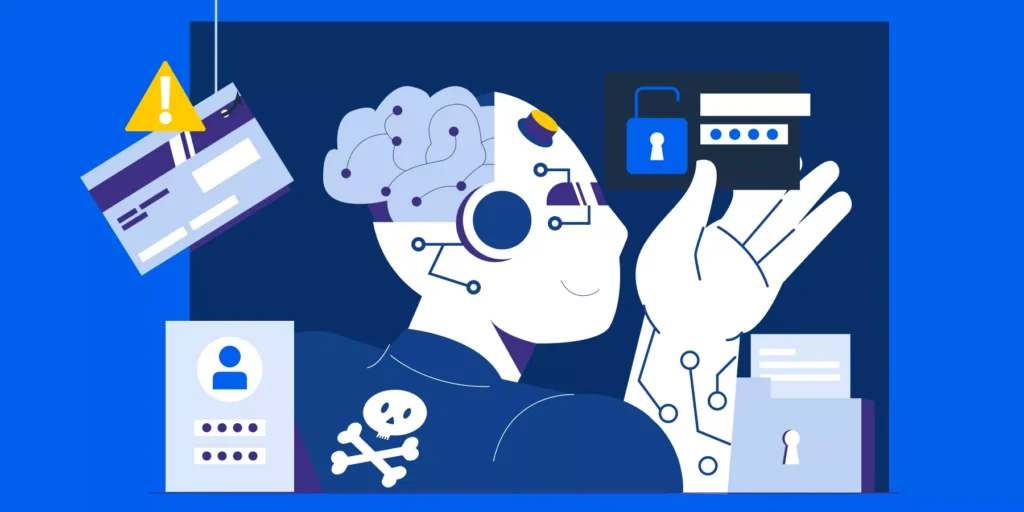Cybersecurity professionals are constantly vigilant, guarding our organisation’s most valuable assets – data. Despite their best efforts, a survey found that 48% of small and medium-sized businesses (SMBs) reported experiencing a cyberattack in the past year.
These statistics highlight the growing threat landscape and the importance of cybersecurity preparedness for businesses of all sizes.
Having a robust Cybersecurity Incident Response Plan (CSIRP) is the difference between swiftly recovering from an attack and suffering significant downtime and potential data loss.
Don’t miss out! We’ll provide a free, downloadable CSIRP template at the end of this guide to help you develop your plan.

The Importance of a Strong Incident Response Plan
The benefits of a well-defined CSIRP are undeniable:
- 1. Reduced Downtime: A clear response plan streamlines the process, minimising the time it takes to identify, contain, and recover from an attack.
- 2. Data Protection: Swift action minimises the potential for data loss or exfiltration.
- 3. Lower Costs: By minimising downtime and data loss, you can significantly reduce the financial impact of a security incident.
- 4. Improved Business Continuity: A well-rehearsed IRP ensures your organisation can quickly resume normal operations.
Compliance and Regulations
Beyond the operational benefits, having a robust CSIRP can help your organisation comply with various data privacy regulations and industry standards.
Here are some key respects:
- 1. Regulatory Breach Notification: Many regulations, such as the EU General Data Protection Regulation (GDPR) and certain state laws in the US, mandate specific notification timelines in the event of a data breach.
A well-defined CSIRP ensures you have clear procedures for meeting these deadlines and effectively communicating with regulatory bodies.
- 2. Data Privacy Requirements: Data privacy regulations like the California Consumer Privacy Act (CCPA) often require organisations to have an incident response plan in place. Failure to comply can result in fines and other penalties.
- 3. Security Audits and Certifications: Industry-specific security frameworks, such as ISO 27001, often include requirements for an IRP as part of their audit process. Demonstrating a documented and functional IRP is essential for achieving these certifications.
Crafting Your CSIRP: A Step-by-Step Guide
Now that we understand the importance of a Cybersecurity Incident Response Plan (CSIRP), let’s get into the creation process:
- 1. Develop a Policy: This foundational document serves as the backbone for all incident response activities. It outlines high-level priorities and assigns clear decision-making authority.
- 💡GAT TIP: Utilize GAT+ to conduct risk assessments and monitor your Google Workspace environment continuously, ensuring you have the necessary insights to inform your incident response strategy.
- 2. Build Your Team: Establish a dedicated incident response team (IRT) with representatives from IT security, legal, communications, and senior management. Clearly define roles and responsibilities for each member.
- 3. Create Playbooks: These are detailed guides for handling specific incident types, such as ransomware attacks or data breaches. Playbooks ensure a consistent and efficient response.
- 💡GAT TIP: Use insights from GAT+ and GAT Shield to develop customised playbooks that address the unique threats facing your Google Workspace.
- 4. Establish a Communication Plan: Outline how internal and external stakeholders will be informed during an incident. This includes communication protocols for law enforcement.
- 5. Test and Refine: Regularly test your CSIRP through simulations to identify weaknesses and ensure team preparedness. Use a combination of discussion-based exercises and hands-on simulations.
- 💡GAT TIP: Regularly train your team using scenarios based on real data insights from GAT Shield, testing your plan’s effectiveness against potential threats.
- 6. Lessons Learned: Following an incident, conduct a thorough review to identify areas for improvement in your CSIRP and overall security posture.
- 7. Continuous Improvement: The world of cybersecurity is constantly evolving. Regularly review, update, and test your CSIRP to ensure it remains effective.
- 💡GAT TIP: Continuously refine your plan based on new data and trends identified by GAT Labs’ comprehensive analytics and reporting tools.

Responding to a Cybersecurity Incident
While a well-defined CSIRP is essential for preparation, it’s equally crucial to understand the key steps involved in responding to a security incident.
Here’s a breakdown of what your team should expect:
During an Incident
- ▪️ Incident Manager (IM): The IRP designates an Incident Manager (IM) to lead the response. This individual oversees communication flows, updates stakeholders, and delegates tasks – essentially acting as the central command during the crisis. The IM avoids technical duties to maintain focus on coordination.
- ▪️ Technical Manager (TM): The IRP also assigns a Technical Manager (TM) who acts as the technical subject matter expert. The TM assembles the necessary technical expertise, both internal and potentially external (with proper authorisation), to deal with the incident.
- ▪️ Communications Manager (CM): A Communications Manager (CM) handles external communication with the media, social media updates, and interactions with external stakeholders.
Next Steps After a Security Incident:
- 1. Containment and Eradication: The primary objective is to stop the attack and prevent further damage. This might involve isolating infected systems, shutting down specific applications, or even taking the entire network offline.
- 2. Impact Assessment: While containing the attack, your team should simultaneously assess the potential impact. This includes determining the affected systems, compromised data (if any), and potential disruptions to business operations.
- 3. Activate Business Continuity/Disaster Recovery (BC/DR) Plan: Depending on the incident’s severity, activating your BC/DR plan may be necessary. This plan outlines procedures for maintaining critical operations during disruptions, such as switching to backups or activating a secondary site.
- 4. Evacuation or Stand Down: In rare circumstances, a cyberattack may necessitate the evacuation of a physical location or a stand-down of specific personnel. The decision to evacuate or stand down should be based on a risk assessment and the specific nature of the attack.
- 5. Law Enforcement Engagement: For serious incidents, involving law enforcement may be necessary. This could be crucial for gathering evidence, identifying the attackers, and potentially recovering stolen data.
- 6. Communication and Transparency: Throughout the incident response process, clear and consistent communication with internal and external stakeholders is vital. Internally, keep your staff informed about the situation and any necessary actions they need to take.
Externally, communicate with customers, partners, and regulators as appropriate. Being transparent about the incident and the steps your organisation is taking to address it is key.
Remember: The specific actions taken during a cybersecurity incident will vary depending on the nature of the attack and the impact on your organisation.
Following an Incident
- 1. Retrospective Meeting: After the incident is contained, a formal retrospective meeting (sometimes called a postmortem) is crucial for learning and improvement.
The IM leads this discussion, reviewing the incident timeline. The IM also gathers insights from the team and identifies areas for improvement in the IRP and overall security posture. Remember, retrospectives are blameless environments. Open and honest discussion is essential for identifying process and system weaknesses, not assigning fault.
- 2. Policy and Procedure Updates: Based on the insights from the retrospective, the CSIRP and related policies and procedures are updated to address any identified vulnerabilities and improve future response effectiveness.
- 3. Communication with Staff: Transparency is key. Sharing the findings from the retrospective with your staff demonstrates the organisation’s commitment to security. Additionally, it fosters a culture of security awareness within the company.
Conclusion
By following these steps and fostering a culture of cybersecurity awareness within your organisation, you can significantly improve your preparedness for security incidents.
A Cybersecurity Incident Response Plan is an investment in protecting your data, minimising downtime, and ensuring business continuity in the face of cyber threats.
🔒 Ready to take control of your Google Workspace security? Let GAT Labs be your trusted partner. We offer industry-leading auditing and security tools to help you drive success and keep your data safe. Schedule a free demo today and see how GAT Labs can help you achieve peace of mind.
Insights That Matter. In Your Inbox.
Join our newsletter for practical tips on managing, securing, and getting the most out of Google Workspace, designed with Admins and IT teams in mind.







